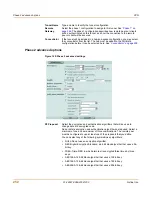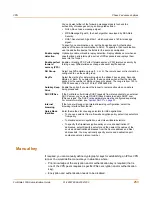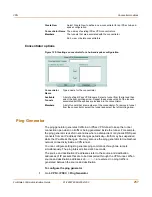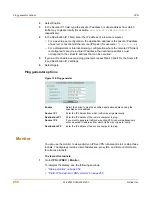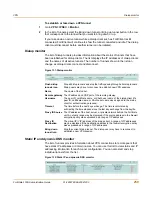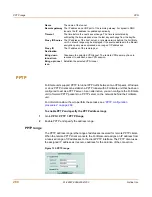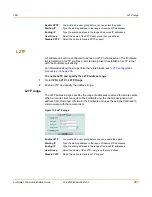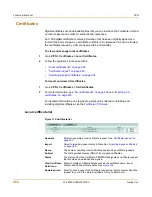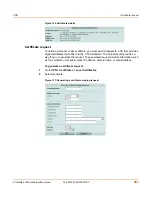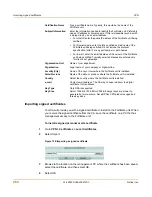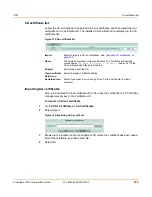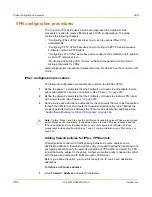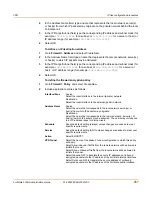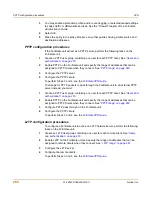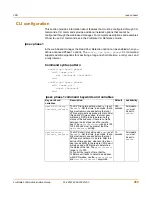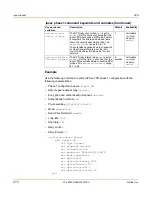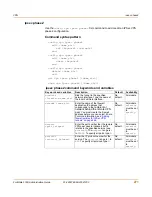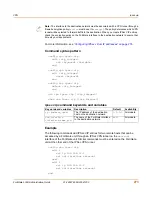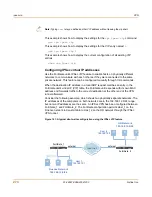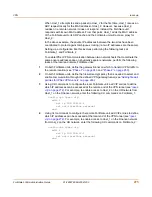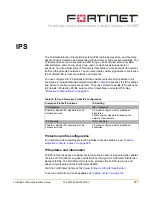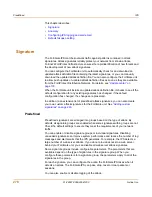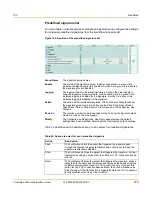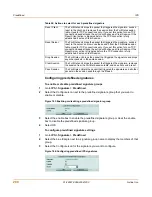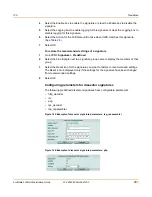
266
01-28007-0068-20041203
Fortinet Inc.
IPSec configuration procedures
VPN
VPN configuration procedures
The
FortiGate VPN Guide
uses a task-based approach to provide all of the
procedures needed to create different types of VPN configurations. The guide
contains the following chapters:
• “Configuring IPSec VPNs” describes how to set up various IPSec VPN
configurations.
• “Configuring PPTP VPNs” describes how to configure a PPTP tunnel between a
FortiGate unit and a PPTP client.
• “Configuring L2TP VPNs” describes how to configure the FortiGate unit to operate
as an L2TP network server.
• “Monitoring and Testing VPN Tunnels” outlines some general monitoring and
testing procedures for VPNs.
General high-level procedures are presented here. For details, see the
FortiGate VPN
Guide
.
IPSec configuration procedures
The following configuration procedures are common to all IPSec VPNs:
1
Define the phase 1 parameters that the FortiGate unit needs to authenticate remote
peers and establish a secure a connection. See
“Phase 1” on page 246
.
2
Define the phase 2 parameters that the FortiGate unit needs to create a VPN tunnel
with a remote peer. See
“Phase 2” on page 250
.
3
Define source and destination addresses for the IP packets that are to be transported
through the VPN tunnel, and create the firewall encryption policy, which defines the
scope of permitted services between the IP source and destination addresses. See
“Adding firewall policies for IPSec VPN tunnels” on page 266
.
Adding firewall policies for IPSec VPN tunnels
Firewall policies control all IP traffic passing between a source address and a
destination address. A firewall encryption policy is needed to allow the transmission of
encrypted packets, specify the permitted direction of VPN traffic, and select the VPN
tunnel that will be subject to the policy. A single encryption policy is needed to control
both inbound and outbound IP traffic through a VPN tunnel.
Before you define the policy, you must first specify the IP source and destination
addresses.
To define an IP source address
1
Go to
Firewall > Address
and select Create New.
Note:
Perform Steps 1 and 2 to have the FortiGate unit generate unique IPSec encryption and
authentication keys automatically. In situations where a remote VPN peer requires a specific
IPSec encryption and/or authentication key, you must configure the FortiGate unit to use
manual keys instead of performing Steps 1 and 2. For more information, see
“Manual key” on
page 253
.
Содержание FortiGate 100A
Страница 12: ...Contents 12 01 28007 0068 20041203 Fortinet Inc ...
Страница 24: ...24 01 28007 0068 20041203 Fortinet Inc FortiLog documentation Introduction ...
Страница 46: ...46 01 28007 0068 20041203 Fortinet Inc Installing and using a backup firmware image System status ...
Страница 72: ...72 01 28007 0068 20041203 Fortinet Inc Transparent mode VLAN settings System network ...
Страница 80: ...80 01 28007 0068 20041203 Fortinet Inc DHCP IP MAC binding settings System DHCP ...
Страница 114: ...114 01 28007 0068 20041203 Fortinet Inc Access profile options System administration ...
Страница 232: ...232 01 28007 0068 20041203 Fortinet Inc Profile CLI configuration Firewall ...
Страница 244: ...244 01 28007 0068 20041203 Fortinet Inc peergrp Users and authentication ...
Страница 276: ...276 01 28007 0068 20041203 Fortinet Inc ipsec vip VPN ...
Страница 338: ...338 01 28007 0068 20041203 Fortinet Inc Configuring the banned word list Spam filter ...
Страница 356: ...356 01 28007 0068 20041203 Fortinet Inc syslogd setting Log Report ...
Страница 374: ...374 01 28007 0068 20041203 Fortinet Inc Index ...

